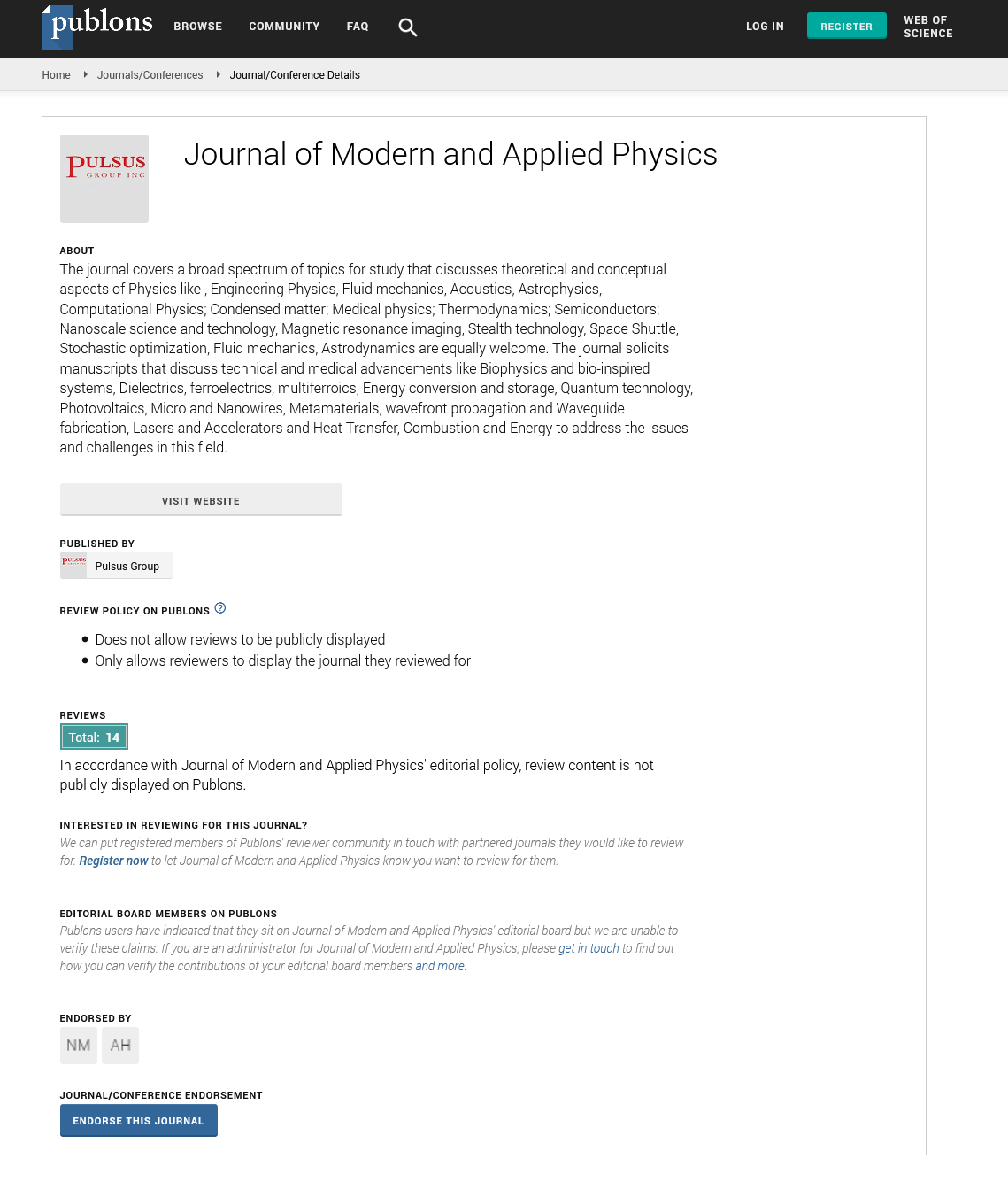Computational imaging and its prospects
Received: 04-Sep-2017 Accepted Date: Sep 04, 2017; Published: 15-Sep-2017
Citation: Gong W. Computational imaging and its prospects. J Mod Appl Phys. 2017;1(1): 02.
This open-access article is distributed under the terms of the Creative Commons Attribution Non-Commercial License (CC BY-NC) (http://creativecommons.org/licenses/by-nc/4.0/), which permits reuse, distribution and reproduction of the article, provided that the original work is properly cited and the reuse is restricted to noncommercial purposes. For commercial reuse, contact reprints@pulsus.com
Introduction
Since the charge coupled devices (CCD) were invented, the technique of digital image processing has been dramatically developed and computational imaging has been becoming an increasing interesting research area. Different from traditional direct imaging method, for computational imaging, the image of interested target is calculated or recovered from the detection signals based on some image reconstruction algorithms. Therefore, computational imaging technique can make the structure of some imaging system become much simpler and can obtain better imaging quality, and even acquires high-dimensional information from a low-dimensional detector. For example, the light field camera can clearly image a focused target and a defocused target at the same time. Ghost imaging lidar and single-pixel camera can realize three-dimensional imaging from single-pixel detectors.
In order to obtain an image with better reconstruction quality, previous computational imaging technique mainly focused on the investigation of reconstruction algorithms. Recently, a novel sensing/sampling paradigm called compressive sensing (CS) asserts that one can recover an N-pixel image from far fewer than N global random measurements. It means that CS technique goes against common wisdom in data acquisition determined by Shannon’s celebrated theorem. To make this possible, CS relies on two principles: the sparsity of images and the incoherence of sensing modality, which suggests that the property of sensing matrix has a great effect on reconstruction quality and must be also considered seriously in the designing process of computational imaging system. When CS is introduced into computational imaging, computational imaging technique has been further developed and has already been successfully applied to some areas like medical imaging (especially CT and MRI), holography, remote sensing, hyperspectral imaging, and super-resolution imaging.
Ghost imaging (GI), as one of the hottest research directions of computational imaging in recent ten years, is a non-local imaging approach that acquires the image of an object through spatial intensity correlation measurements. In the schematic of GI, the object’s image is reconstructed by using two spatially correlated light beams: the idle beam, which never illuminates the object and is directly measured by a CCD camera, and the signal beam, which illuminates the object and then is measured by a single-pixel detector. The approach was first demonstrated by entangled source and later realized with classical sources like pseudo-thermal light, thermal light, and even microwave. Due to the characteristic of GI setup and its physical principle, GI has the capability of high-resolution imaging, high efficiency in information extraction, and high sensitivity in detection. For example, because the modulated light field is random and the measurement process is global, which is naturally corresponding to the physical implementation of CS theory, GI can reconstruct the target’s image from the measurements far below Nyquist limit and realize far-field super-resolution imaging. Again, because all the photons reflected (or transmitted) from the object illuminate the same single-pixel detector, the detection sensitivity of GI is comparative to lidar and GI is developing into a novel staring 3D lidar, which has a great application in remote sensing. In next ten years, GI lidar with single-photon detection and multispectral ghost imaging lidar may be a research focus.
In the future, based on the methods like deep learning and big data, the optimization of sensing matrix and reconstruction algorithms in combination with images will become a research trend for computational imaging. The computational imaging system will be more adaptive to the application scenarios and there will be revolutionary research advances in some applications like target recognition and communications.





